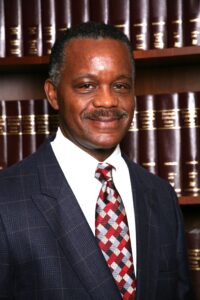August 27, 2024, Update:
Why is CA ACA5 (Assembly Constitutional Amendment 5) on the California ballot for Nov 5, 2024, elections?
“The California Constitution provides that only a marriage between a man and a woman is valid or recognized in California, and federal law permanently enjoins the state from enforcing this constitutional provision.
This measure would repeal this unenforceable constitutional provision and would instead provide that the right to marry is a fundamental right, as specified.”
The proposition is listed on the California voter ballot as Proposition 3.
The California Secretary of State official voter information on Proposition 3 states the following:
Proposition 3 removes discriminatory language from the California Constitution that states marriage is only between a man and a woman and replaces it with a provision that establishes the right to marry as a fundamental right, enshrining protections for same-sex and interracial couples.
“This ballot measure comes at a pivotal moment when the U.S. Supreme Court has made clear its willingness to revoke hard-won rights, endangering the freedoms of millions of Californians.”—American Civil Liberties Union of Northern California
After the California Supreme Court decision in May 2008, In In re Marriage Cases (2008) 43 Cal.4th 757, 855-856 [76 Cal.Rptr.3d 683, 183 P.3d 384] (Marriage Cases), where the court held that denying same-sex couples the right to marry denies them equal protection of the law, same-sex marriages became legal in California. It did not last long.
In November 2008, the majority of California voters passed Proposition 8, and the same-sex marriage issued returned to the California Supreme Court. This time, one year later, the court came to a different conclusion. Strauss v. Horton (2009) 46 Cal.4th 364. The court said that Proposition 8 was a constitutional amendment not a revision, and that’s the end of the designation of “marriage” for same-sex couples. Since I find the court’s reasoning in Strauss insulting to gay people and difficult to rationalize, I prefer to remember Justice Moreno’s lone dissent below:
Justice Moreno wrote “The question before us is not whether the language inserted into the California Constitution by Proposition 8 discriminates against same-sex couples and denies them equal protection of the law; we already decided in the Marriage Cases that it does. The question before us today is whether such a change to one of the core values upon which our state Constitution is founded can be accomplished by amending the Constitution through an initiative measure placed upon the ballot by the signatures of 8 percent of the number of persons who voted in the last gubernatorial election and passed by a simple majority of the voters. (Cal. Const., art. II, § 8.) Or is this limitation on the scope of the equal protection clause to deny the full protection of the law to a minority group based upon a suspect classification such a fundamental change that it can only be accomplished by revising the California Constitution, either through a constitutional convention or by a measure passed by a two-thirds vote of both houses of the Legislature and approved by the voters? (Cal. Const., art. XVIII.)”
“The equal protection clause is therefore, by its nature, inherently counter-majoritarian. As a logical matter, it cannot depend on the will of the majority for its enforcement, for it is the will of the majority against which the equal protection clause is designed to protect. Rather, the enforcement of the equal protection clause is especially dependent on “the power of the courts to test legislative and executive acts by the light of constitutional mandate and in particular to preserve constitutional rights, whether of individual or minority, from obliteration by the majority.” (Bixby v. Pierno (1971) 4 Cal.3d 130, 141 [93 Cal.Rptr. 234, 481 P.2d 242].)”
On May 27, 2009, plaintiffs filed an action in the U.S. District Court in San Francisco to challenge Proposition 8 on federal constitutional grounds. On August 4, 2010, the district court concluded “Plaintiff challenges Proposition 8 under the Due Process and Equal Protection Clauses of the Fourteenth Amendment. Each challenge is independently meritorious, as Proposition 8 both unconstitutionally burdens the exercise of the fundamental right to marry and creates an irrational classification on the basis of sexual orientation.” Perry v. Hollingsworth C09-2292 (2010) N.D.Cal., p.109.
The case was appealed to the Ninth Circuit Court of Appeals. See below summary of same-sex marriages for history and disposition.
On June 28, 2013, same-sex marriages became legal again in California, as clarified by the Governor, Edmund G. Brown, and the Attorney General, Kamala D. Harris.
July 20, 2023, Update:
On July 17, 2023, the California Supreme Court issued an opinion, Erik Adolph v. Uber Technologies, Inc. addressing a recent 2022 U.S. Supreme Court decision.
Because “[t]he highest court of each State . . . remains ‘the final arbiter of what is state law’ ” (Montana v. Wyoming (2011) 563 U.S. 368, 378, fn. 5), we are not bound by the high court’s interpretation of California law.
This case could set the stage for any litigation about ACA-5 ballot proposition in California scheduled for November 2024. ACA-5 would repeal the unenforceable constitutional provision (Prop. 8), only a marriage between a man and a woman is valid or recognized in California, and would instead provide that the right to marry is a fundamental right, as specified.
California Domestic Partners Act and Same-Sex Marriages Overview
The United States Supreme Court decision Obergefell v. Hodges, 14-556 (June 26, 2015) made same-sex-marriages legal in all of the 50 states.
AB 26 was signed into law by Governor Gray Davis in October 1999, and became effective January 1, 2000. This legislation established a registry of domestic partners, and granted them specific rights, including the right to hospital visits. In March 2000, voters in California passed Proposition 22, which stated “Only marriage between a man and a woman is valid or recognized in California.” The proposition amended the Family Code sections defining marriage. In October 2000, Governor Gray Davis signed AB 25, which expanded some additional rights for domestic partners.
In early February 2004, Gavin Newsom, the Mayor of San Francisco, directed the County Clerk to provide marriage licenses regardless of gender or sexual orientation. The mayor expressed his belief that denying same sex couples the right to marry was a violation of equal protection of the California Constitution, which the mayor stated he was sworn to uphold. About 4,000 same-sex licenses were issued and marriages performed. About one month after, in early March 2004, The California Supreme Court directed San Francisco officials to refrain from issuing any other same-sex marriage licenses or certificates. In August 2004, the California Supreme Court ruled that the local officials in San Francisco exceeded their authority, and held that the approximately 4,000 same-sex marriages performed were void and of no legal effect. (Lockyer v. City and County of San Francisco (2004) 33 Cal.4th 1055, 17 Cal.Rptr.3d 225.)
On January 1, 2005, the current provisions of the California Domestic Partners Rights and Responsibilities Act of 2003 became law, Family Code §§ 297-299.6. The provisions amended Family Code 297.5 as follows: “(a) Registered domestic partners shall have the same rights, protections, and benefits, and shall be subject to the same responsibilities, obligations, and duties under law, whether they derive from statutes, administrative regulations, court rules, government policies, common law or any other provisions or sources of law, as are granted to and imposed upon spouses.”
On May 15, 2008, the California Supreme Court held that statutes that discriminate against persons based on sexual orientation is considered under “suspect classification” when determining equal protection violations under the California Constitution. Therefore, those statutes are “subject to strict scrutiny under this constitution.” (In re Marriage Case (2008) 43 Ca.4th 757, 839-843, 76 Cal.Rptr.3d 683,750-753. Further, the California Supreme Court held “…the retention of the traditional definition of marriage does not constitute a state interest sufficiently compelling, under strict scrutiny equal protection standard, to justify withholding that status from same-sex couples…” ( In re Marriage Case 43 Ca.4th 757, 855, 76 Cal.Rptr.3d 683,764. Same-sex marriages became legal in California on June 16, 2008.
On November 4, 2008, the voters of California passed Proposition 8, which added a new section to the state constitution, providing “Only marriage between a man and a woman in valid or recognized in California.” On May 26, 2009, the California Supreme Court held that Proposition 8 was a valid amendment to the state constitution by the voter initiative process. However, the Court pointed out that “…Proposition 8 does not entirely repeal or abrogate the aspect of a same-sex couple’s state constitutional right to privacy and due process that was analyzed in the majority opinion in the Marriage Cases — that is, the constitutional right of same-sex couples to ‘choose one’s life partner and enter with that person into a committed, officially recognized, and protected family relationship that enjoys all the constitutionally based incidents of marriage’…Instead, the measure carves out a narrow and limited exception to these state constitutional rights, reserving the official designation of the term “marriage” for the union of opposite-sex couples…leaving undisturbed…same-sex couple’s state constitutional right…of equal protection of the laws.” (Strauss v. Horton (2009) 46 Cal.4th 364,387-388, 93 Cal.Rptr. 591,607. In re Marriage Case (2008) 43 Ca.4th 757, 839-843, 76 Cal.Rptr.3d 683,750-753. The approximately 18,000 same-sex couples married between June 16, 2008, and November 4, 2008, before Proposition 8 became effective, continued to have a legal “marriage.” Proposition 8 had no legal effect on Domestic Partners Act.
On May 27, 2009, plaintiffs filed an action in the U.S. District Court in San Francisco to challenge Proposition 8 on federal constitutional grounds. On August 4, 2010, the district court concluded “Plaintiff challenges Proposition 8 under the Due Process and Equal Protection Clauses of the Fourteenth Amendment. Each challenge is independently meritorious, as Proposition 8 both unconstitutionally burdens the exercise of the fundamental right to marry and creates an irrational classification on the basis of sexual orientation.” Perry v. Hollingsworth C09-2292 (2010) N.D.Cal., p.109. “Because Proposition 8 is unconstitutional under both the Due Process and Equal Protection Clauses, the court orders entry of judgment permanently enjoining its enforcement; prohibiting the official defendants from applying or enforcing Proposition 8 and directing the official defendants that all persons under their control or supervision shall not apply or enforce Proposition 8.” Perry supra, p.136. The Ninth Circuit Court of Appeals agreed to hear the case and affirmed the district court decision. On June 26, 2013, the U.S. Supreme Court in Hollingsworth v. Perry 2013 DRDAR 8314 (June 27, 2013) held that the parties pursuing the appeal did not have standing. Therefore, the U.S. Supreme Court ordered the Ninth Circuit opinion vacated. The district court decision remains the final holding. On June 28, 2013, same-sex marriages became legal again in California.
Same-sex marriages became legal in all of the states pursuant to the United States Supreme Court decision Obergefell v. Hodges, 14-556 (June 26, 2015).
Domestic Partners Act continues to be effective.

